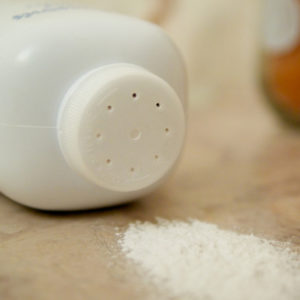Any Detectable Level Of Asbestos In Talc Should Be Considered Harmful, FDA Experts Say

While thousands of consumers nationwide are pursuing lawsuits over injuries allegedly caused by asbestos in talcum powder products, an advisory panel of experts convened by the FDA indicates exposure to any level of toxic fibers in talc that could be inhaled should be considered too dangerous.
On Tuesday, the FDA held a hearing on methods of testing talcum powder for asbestos, which was designed to take in and discuss scientific information on talc testing methodologies and criteria that should be used to measure and characterize asbestos found in cosmetic products that contain talc.
Before the hearing, the FDA’s Interagency Working Group on Asbestos in Consumer Products (IWGACP), formed in 2018, released preliminary recommendations for the FDA to consider. Among a detailed list of testing recommendations and terminology usage, the group indicated that any mineral particles in talc products small enough to be drawn into the lungs, even if they don’t technically qualify as asbestos, should be considered potentially harmful to consumers.

Learn More About
Talcum powder or talc powder may cause women to develop ovarian cancer.
Learn More About this Lawsuit See If You Qualify For Compensation“Importantly, testing methods pertaining to asbestos in articles of commerce were developed for analyzing ‘bulk materials’ containing at least 1% asbestos as an intentional ingredient by weight or in settings where asbestos was known to be present,” the group states. “Published methods for analysis of bulk materials were not intended to determine the presence of asbestos in products at less than 1% concentration. In contrast, the likely amount present when asbestos is a contaminant or impurity in talc or talc-containing consumer products might be orders of magnitude below 1%.”
The working group noted that asbestos and minerals that look like asbestos likely cause similar health problems, and that making a distinction between them is irrelevant. All are classified as elongated mineral particles (EMPs).
At the hearing, scientists said all EMPs appear to have the ability to cause cancer and other diseases. However, industry lobbyists at the hearing said that counting all EMPs would mislead consumers.
Last year, the FDA indicates it surveyed 50 talc-containing cosmetic products, which resulted in a number of recalls. The highest profile of which was a Johnson’s Baby Powder recall in October.
The recall came after FDA testing found sub-trace levels of chrysotile asbestos in a bottle of Baby Powder sold by an online retailer, impacting about 33,000 bottles sold in stores nationwide.
Johnson & Johnson disputed the FDA’s findings, saying its own tests found no traces of asbestos. However, the company had to redo those tests later, due to problems with the first testing results, some of which suggested there was asbestos in the talc, according to some reports. Johnson & Johnson says the second batch of tests also came up negative.
While Johnson & Johnson questioned the FDA’s testing methods, the agency stood by its findings.
Talcum Powder Lawsuits
Johnson & Johnson currently faces about 15,000 Baby Powder lawsuits and Shower-to-Shower lawsuits that are pending in the federal court system, each involving similar allegations that women were diagnosed with ovarian cancer, mesothelioma or other injuries that were allegedly caused by regular exposure to asbestos in talcum powder, which was commonly applied to their bodies on a regular basis for decades.
Although evidence uncovered during the litigation suggests the manufacturer has been aware for decades that asbestos may be present in the talc ingredients, increasing the risk of cancer, Johnson & Johnson has attempted to defend the safety of their popular baby powder, and refused to provide warnings to consumers about the potential cancer risk from talc-based powder.
The FDA finding evidence of asbestos contamination in current bottles of Johnson Baby Powder distributed to stores throughout the U.S. has had a major impact on the on-going litigation, and has undercut the manufacturer’s defense.
While a number of cases have already resulted in massive damage awards in state courts, after juries found that there was compelling evidence that Johnson & Johnson failed to warn consumers about the risks associated with their product, most of the claims are currently pending in the federal court system, where a U.S. District Judge is currently considering whether expert witness testimony proposed by plaintiffs is sufficiently reliable to permit the cases to proceed to trial.
If Johnson & Johnson is unable to disqualify plaintiffs expert witnesses in the federal court system, it is expected that a series of “bellwether” cases will be scheduled for trial, to gauge how juries respond to certain evidence and testimony that is presented in the federal litigation, and the company will face increasing pressure to consider negotiating talcum powder cancer settlements if they are unable to successfully defend the claims at trial.
Get more articles like this sent directly to your inbox.
"*" indicates required fields






0 Comments